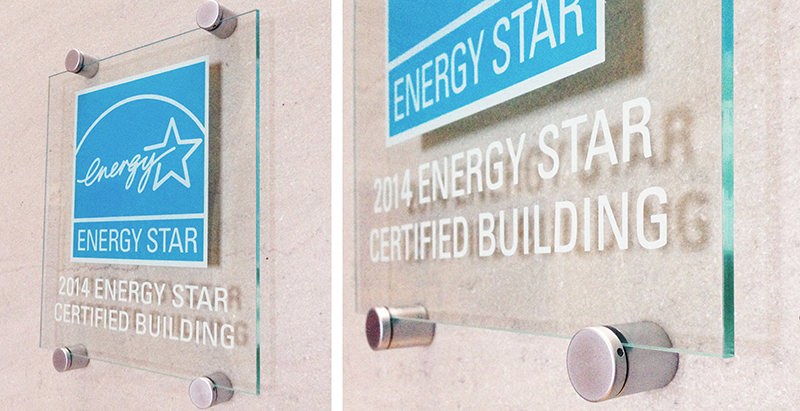Detrimental Effects of Cutting ENERGY STAR® for Colleges and Universities
Let's Save Energy
Alliance to Save Energy's Blog

A wildly successful energy conservation program is slated to be cut in the new administration’s budget – a move that would prove detrimental to colleges and universities and the students they serve.
The ENERGY STAR® program was developed by the Environmental Protection Agency (EPA) in 1992 to reduce energy consumption in both residential and commercial structures by having products and buildings evaluated, approved, and certified by an independent third party. This proactive program resulted in energy-saving operations exceeding an estimated $430 billion since its inception.
The White House has recommended eliminating ENERGY STAR® as part of its proposed 31 percent cut to the EPA budget. This EPA cut is one of the largest proposed reductions in the entire federal budget, in which the EPA accounts for only two-tenths of one percent. This $2.6 billion cut will bring the EPA budget to the lowest level in four decades–eliminating more than 50 EPA programs and over 20 percent of all staff positions.
Many institutions of all types use ENERGY STAR® third-party evaluation certification in their procurements to ensure products will deliver the optimum energy efficiency. Without the ENERGY STAR® designation, institutions will need to spend staff time to evaluate product specifications, or risk buying energy-inefficient products.
Without ENERGY STAR®, colleges and universities will face increased energy costs and will require additional staff time to procure products. The latest documentation of achievements from 2015 for ENERGY STAR® is impressive, and institutions are urged to contact their legislators to maintain funding for this program that benefits campus operations as well as the overall environment.
Morgan Olsen, executive vice president and treasurer/CFO of Arizona State University noted, “From a sustainability perspective, the ENERGY STAR® brand provides ASU an array of valuable services premised upon voluntary, market-based principles that promote leadership in energy efficiency and product innovation. By purchasing only ENERGY STAR® products whenever available, ASU can efficiently ensure that its purchasing decisions align with its carbon neutrality goals. Without an ENERGY STAR® program, we would be required to expend significantly more effort to find the products that help us achieve our goals.”
ENERGY STAR® branding at Slippery Rock University in Pennsylvania is utilized in its buying procedures where they are “committed to the purchase of energy-efficient appliances and equipment to minimize the cost of energy to operate this equipment. The objective of these guidelines is to ensure the purchase of energy-efficient appliances and equipment. Purchasing efficient products reduces energy and overall life cycle costs without compromising quality. By this action, the university demonstrates leadership and commitment to environmental values by creating a culture of environmental responsibility. The university will use its purchasing power to create positive environmental and economic change by improving energy efficiency.” Slippery Rock University departments are expected to research the availability of equipment on the ENERGY STAR® website www.energystar.gov that meets the needs of the program.
Martha M. Larsen, Energy Campus Manager at Carleton College in Northfield, Minnesota, commented, “Purchasing ENERGY STAR® appliances has become standard practice at Carleton College because it simply makes good sense. Energy efficiency not only reduces our operations cost but is also consistent with our goal of reducing campus carbon emissions. Both of these outcomes are a benefit to our students."
Another value from ENERGY STAR® purchasing is that utilities use this designation as a requirement for rebates to encourage energy efficiency. These rebates allow the utility to reduce the overall load on the community grid. Georgia College Vice President for Finance and Administration Susan C. Allen commented that their campus only buys “light bulbs that meet the ENERGY STAR® standard as the Georgia Power Rebates program requires this standard.”
In addition to the product savings, the ENERGY STAR® building designation is a great motivator for designers, contractors, and campus personnel to assure their buildings operate at maximum efficiency. Since building operations is the second-highest cost at an institution after salaries, containing energy costs can directly improve funds available for other academic costs. At the end of 2016, nearly 30,000 buildings in numerous industries were ENERGY STAR® partners, including 263 colleges and universities. The National Association of College and University Business Officers (NACUBO) fully supports the effort to maintain funding for the ENERGY STAR® program.
RECENT BLOG POSTS
STAY EMPOWERED
Help the Alliance advocate for policies to use energy more efficiently – supporting job creation, reduced emissions, and lower costs. Contact your member of Congress.
Energy efficiency is smart, nonpartisan, and practical. So are we. Our strength comes from an unparalleled group of Alliance Associates working collaboratively under the Alliance umbrella to pave the way for energy efficiency gains.
The power of efficiency is in your hands. Supporting the Alliance means supporting a vision for using energy more productively to achieve economic growth, a cleaner environment, and greater energy security, affordability, and reliability.



